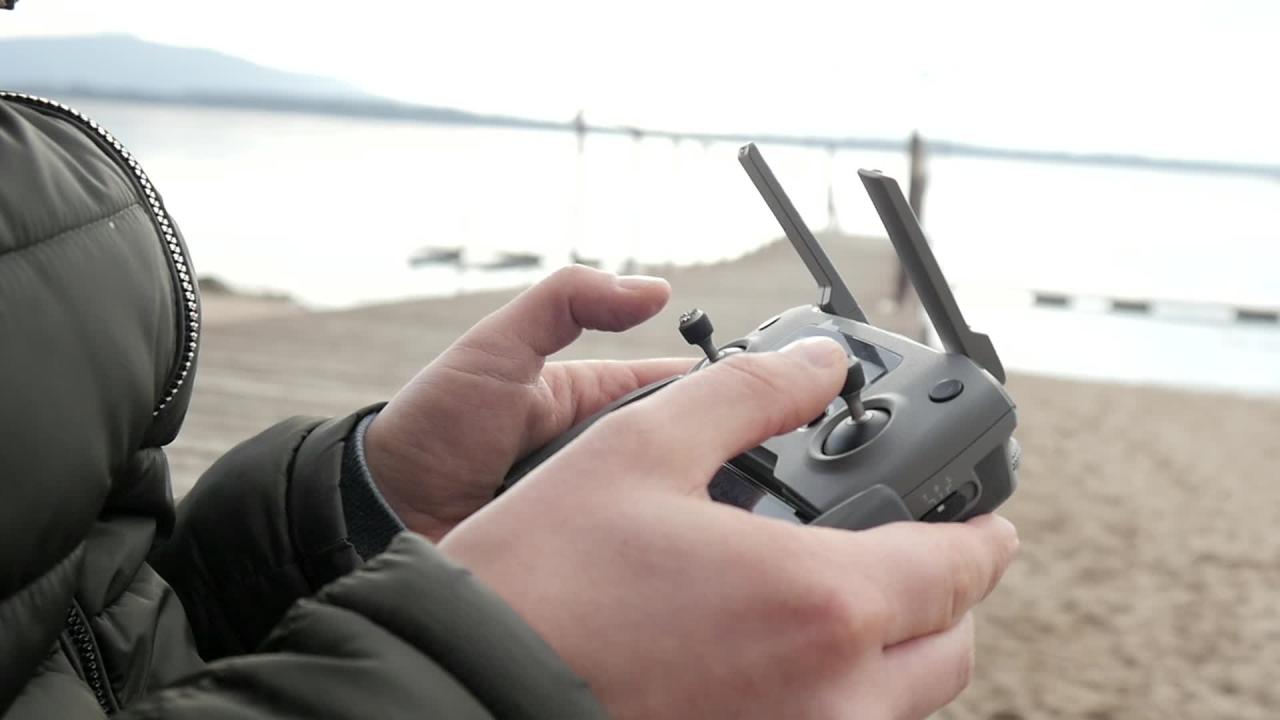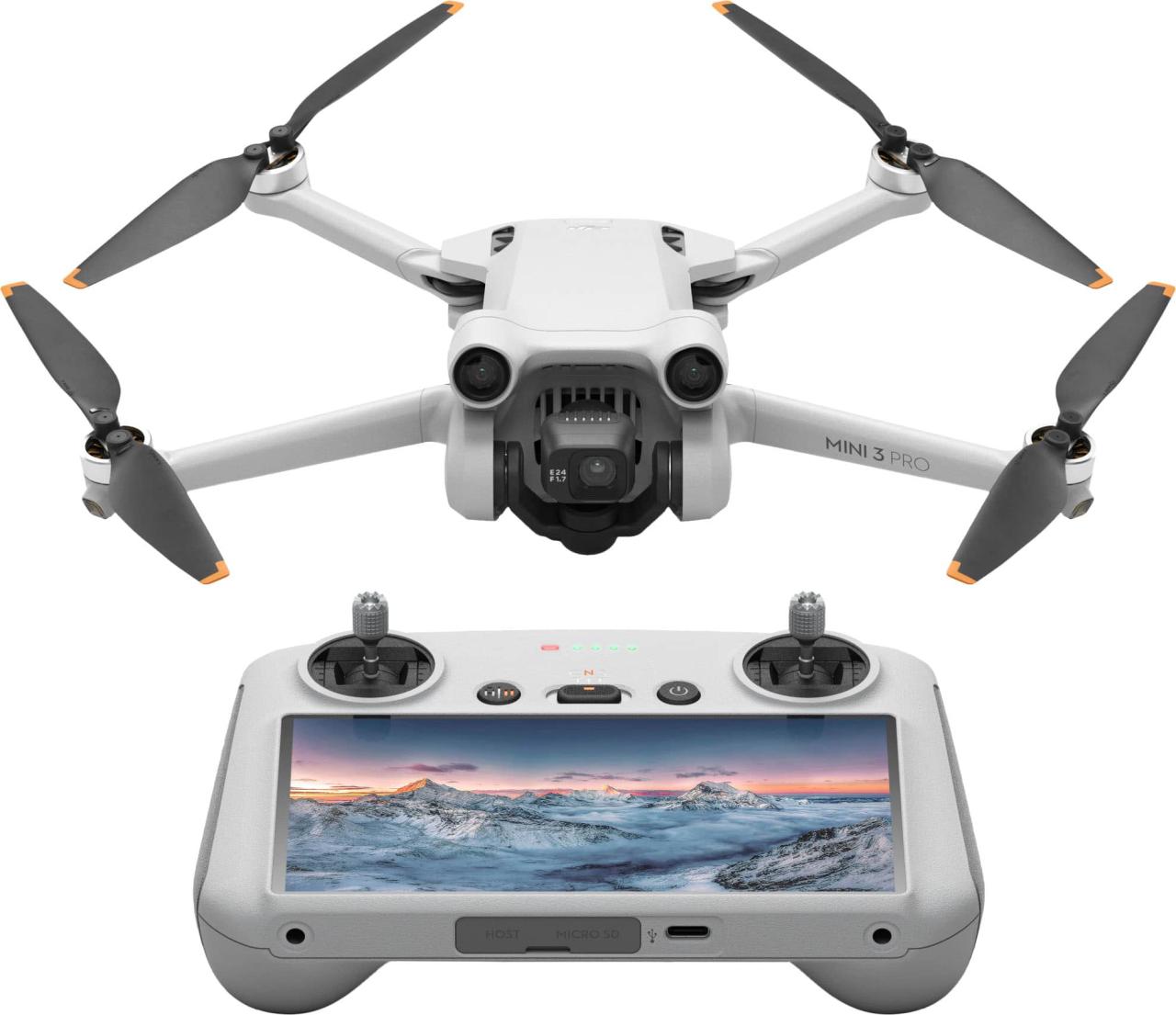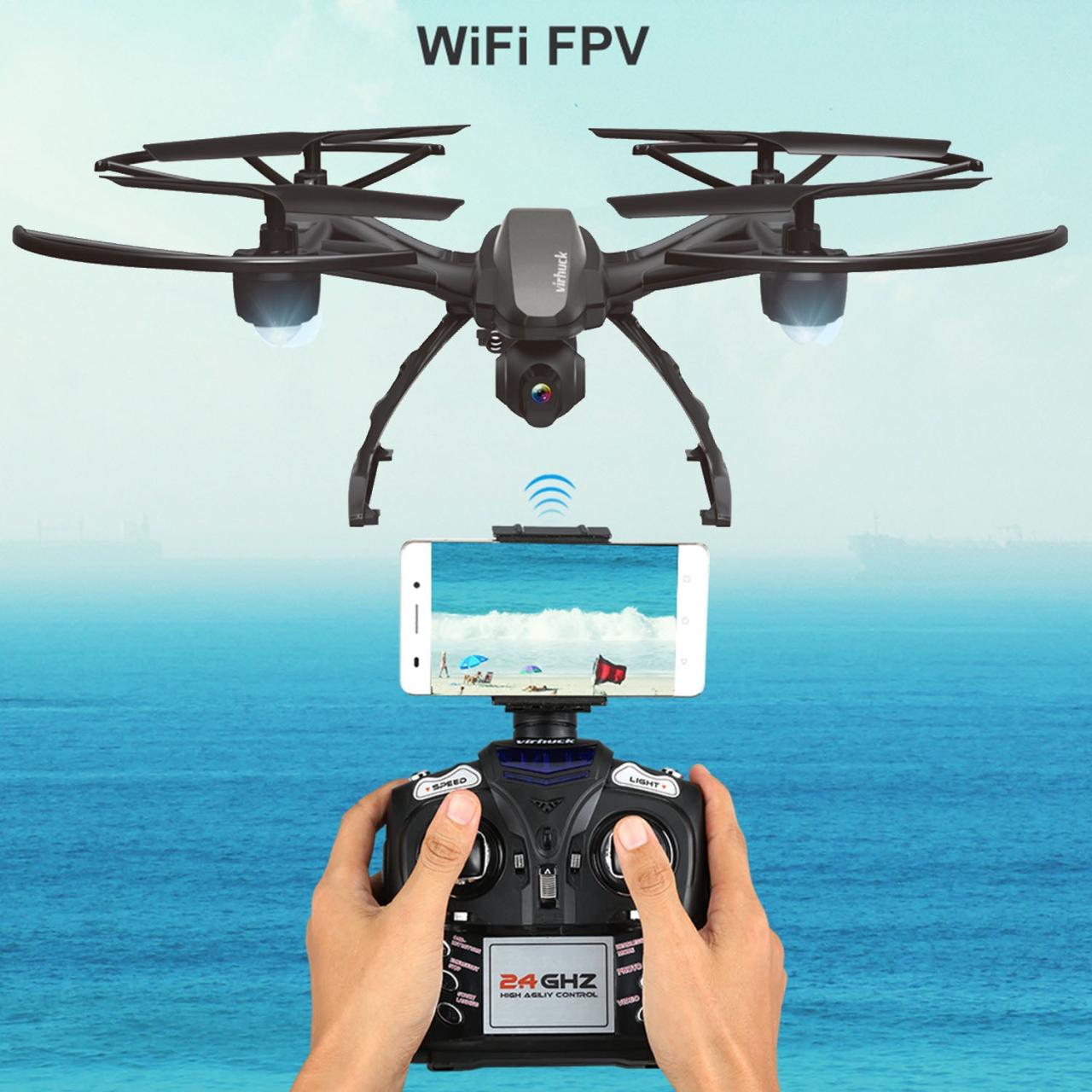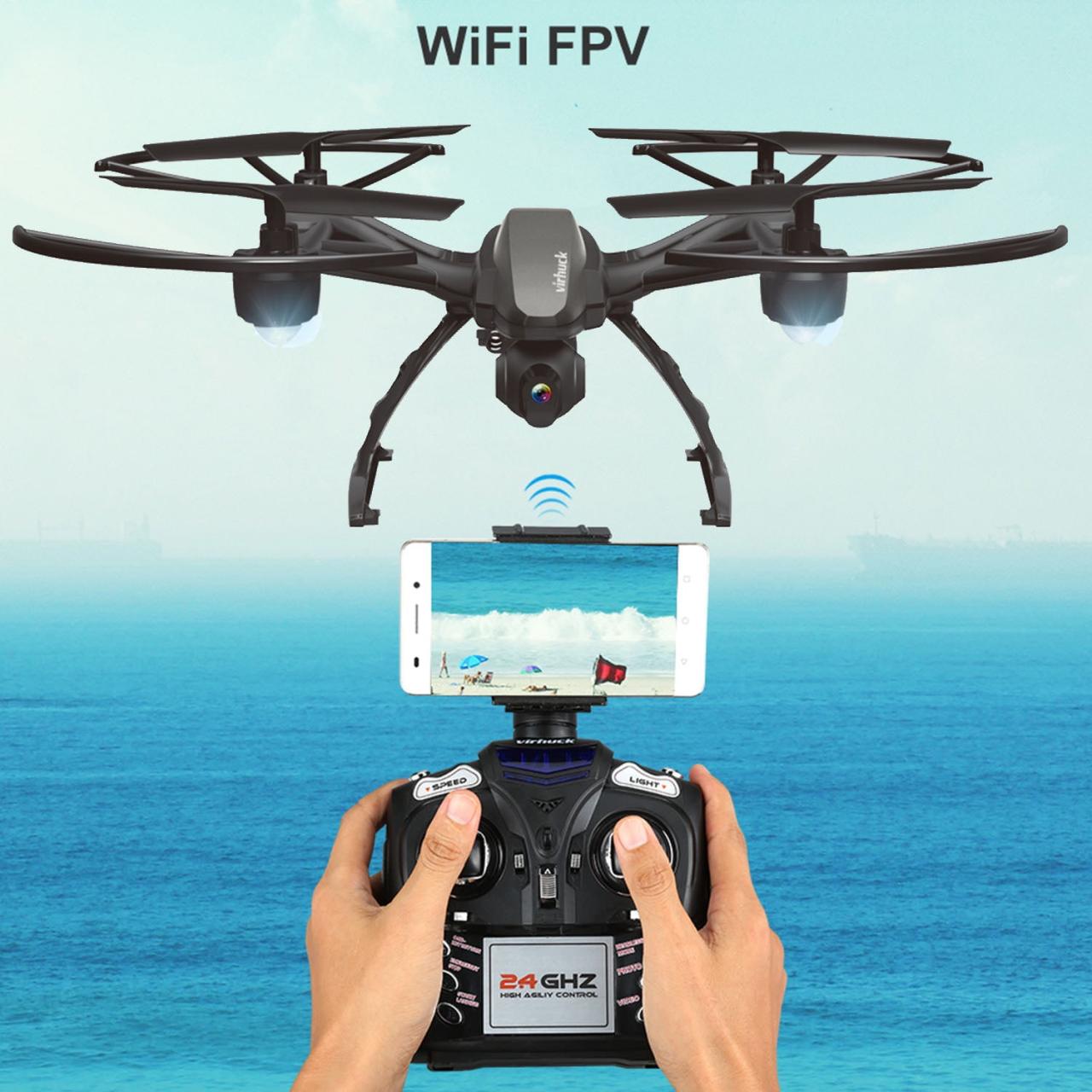Drone remote start: Imagine effortlessly launching your drone from anywhere, anytime. This isn’t science fiction; it’s the exciting reality of remote drone operation. This guide explores the technology, safety, legal aspects, and various applications of this increasingly popular feature, helping you understand its potential and limitations.
We’ll delve into the different types of remote start systems, comparing their functionalities and security implications. We’ll also examine the technological underpinnings, including communication protocols and hardware components. From emergency response scenarios to industrial applications, we’ll showcase real-world examples highlighting the benefits and challenges of this innovative technology. Prepare to take flight into the world of remote drone control!
Understanding Drone Remote Start
Drone remote start, a seemingly simple concept, encompasses a range of functionalities and technological considerations. This exploration delves into the various interpretations, safety implications, technological underpinnings, applications, and legal aspects of initiating a drone flight remotely.
Defining “Drone Remote Start”

The term “drone remote start” can be interpreted in several ways, depending on the specific capabilities of the drone and its control system. It can refer to simply powering on the drone from a distance, initiating pre-flight checks remotely, or even initiating a fully autonomous flight sequence. The functionalities can range from basic power cycling to complete pre-flight procedures and even automated takeoff sequences.
Drone Models and Remote Start Capabilities
Different drone models offer varying levels of remote start capabilities. For example, some consumer drones might only allow for remote power cycling, while professional-grade drones might incorporate more sophisticated remote pre-flight checks and automated takeoff procedures. DJI’s Matrice series, known for its robust features, typically offers extensive remote pre-flight capabilities. On the other hand, simpler hobbyist drones might only have a basic remote power-on function.
Comparison of Remote Start Technologies
Remote start technologies vary significantly. Some drones rely on simple radio frequency (RF) communication for basic power control, while others utilize more advanced protocols like cellular data networks or satellite communication for more complex remote control and autonomous operations. The choice of technology depends on factors like range, reliability, and security requirements.
Safety and Security Aspects of Remote Drone Start
The convenience of remote drone start introduces potential security risks. Unauthorized access could lead to the drone’s misuse or malicious operation. Robust security measures are essential to mitigate these risks.
Mitigating Security Risks
Effective mitigation strategies include secure authentication protocols, encryption of communication channels, and the implementation of geofencing to restrict the drone’s operational area. Regular software updates and robust password management are also crucial.
Safety Protocols for Remote Drone Operation
Before initiating a remote start, operators must conduct thorough pre-flight checks, including verifying battery levels, GPS signal strength, and obstacle clearance. Adherence to established safety guidelines and regulations is paramount.
Hypothetical Security System for Remote Drone Start
A robust security system would incorporate multi-factor authentication, encrypted communication using TLS/SSL, and a secure remote control interface. It would also integrate geofencing and GPS tracking capabilities to monitor the drone’s location and prevent unauthorized access.
Technological Considerations for Remote Drone Start
Remote drone start relies on a complex interplay of hardware and software components. Understanding these elements is crucial for developing and implementing secure and reliable systems.
Underlying Technologies
Key technologies include embedded systems within the drone, communication protocols (like WiFi, Bluetooth, cellular, or satellite), and secure remote control interfaces. Advanced systems may incorporate AI for autonomous decision-making.
Ever wished you could fire up your drone from miles away? That’s the magic of drone remote start! It’s super handy, especially when you’re prepping for a big flight, maybe even a sightseeing mission like the one described in this awesome article about drone in Paris. Imagine setting up your drone remotely before you even arrive at your stunning Parisian location – that’s the power and convenience of remote drone starting.
Communication Protocols
Different communication protocols offer varying levels of range, bandwidth, and security. WiFi offers convenience for short-range operations, while cellular data networks provide broader coverage, and satellite communication enables long-range and beyond-line-of-sight control.
Want to start your drone from afar? Drone remote start technology is pretty cool, offering a lot of convenience. But to really understand the investment side of this burgeoning industry, check out the current market trends by looking at ses stock. This can give you a better grasp of the overall drone market’s potential, which in turn, can help you better appreciate the future of drone remote start capabilities.
Hardware and Software Components
The hardware includes the drone’s flight controller, communication modules, and power system. The software comprises the flight control algorithms, communication protocols, and security software. A robust and reliable system requires a well-integrated hardware and software architecture.
Key Technological Advancements in Remote Drone Start, Drone remote start
| Year | Technology | Description | Impact |
|---|---|---|---|
| 2015 | Improved GPS Integration | Enhanced GPS accuracy and reliability for precise positioning during remote start. | Increased safety and precision of autonomous takeoff and landing. |
| 2018 | Secure Communication Protocols (e.g., AES-256 Encryption) | Implementation of robust encryption algorithms to secure communication between the remote controller and the drone. | Significantly reduced the risk of unauthorized access and control. |
| 2020 | AI-Powered Obstacle Avoidance | Integration of AI algorithms for enhanced obstacle detection and avoidance during autonomous takeoff and flight. | Improved safety and reliability in complex environments. |
| 2023 | 5G Cellular Connectivity | Use of 5G networks for high-bandwidth, low-latency remote control and data transmission. | Enabled more responsive and reliable remote control over greater distances. |
Applications and Use Cases of Remote Drone Start
Remote drone start finds applications across various industries, offering significant advantages in efficiency and safety.
Detailed Use Cases
1. Infrastructure Inspection: Remote start allows inspectors to initiate drone flights for bridge or power line inspections from a safe distance, minimizing risk to personnel. The drone can autonomously navigate the inspection route, capturing high-resolution images and data.
2. Search and Rescue: In emergency situations, remote deployment of a drone equipped with thermal imaging can quickly locate missing persons or assess disaster areas, saving valuable time.
3. Precision Agriculture: Farmers can remotely initiate drone flights for crop monitoring, spraying pesticides, or seeding, optimizing resource allocation and improving yields. Remote start minimizes the need for manual intervention, increasing efficiency.
Future Applications
Future applications could include autonomous package delivery, emergency response in hazardous environments, and advanced environmental monitoring.
Industries Benefiting from Remote Drone Start
- Construction
- Agriculture
- Law Enforcement
- Emergency Services
- Environmental Monitoring
Legal and Regulatory Frameworks for Remote Drone Start
The legal landscape surrounding remote drone operation is evolving. Regulations vary significantly across different countries and jurisdictions.
Existing Regulations
Many countries have established regulations governing drone operation, including requirements for registration, pilot licensing, and operational limitations. These regulations often address safety and security concerns related to remote drone operations.
Legal Implications
The use of remote start features raises questions about liability in case of accidents or unauthorized access. Clear legal frameworks are needed to address these issues.
Challenges in Establishing Consistent Legal Frameworks

Harmonizing drone regulations across different countries is a significant challenge, due to variations in technological capabilities, safety standards, and legal interpretations.
International Legal Landscape Comparison
The legal frameworks for remote drone operation differ widely across countries. Some countries have more permissive regulations, while others maintain stricter controls to ensure safety and security.
Illustrative Examples of Remote Drone Start
Real-world scenarios highlight both the advantages and challenges of remote drone start.
Emergency Response Scenario
Imagine a wildfire raging through a remote area. A first responder, miles away from the fire’s edge, remotely launches a drone equipped with thermal imaging. The drone autonomously flies towards the fire, providing crucial real-time data on the fire’s spread and intensity, allowing for a more effective and safer response strategy. The vivid heat signatures, clearly visible on the drone’s thermal camera feed, guide the firefighting efforts, pinpointing hotspots and directing water drops with precision.
The remote start capability is crucial as the environment is too hazardous for manual drone deployment.
Unauthorized Remote Start Scenario

A malicious actor gains unauthorized access to a drone equipped with a remote start function and initiates a flight over a sensitive area, such as a military base or a nuclear power plant. The drone’s actions could compromise national security or cause significant damage. This highlights the critical need for robust security measures to prevent unauthorized access and control.
Fictional Narrative
In a fictional scenario, a package delivery company utilizes a fleet of drones for autonomous delivery. The remote start feature enables the drones to initiate flights from designated charging stations, optimizing delivery routes and minimizing human intervention. However, a software glitch causes a series of drones to malfunction, highlighting the importance of rigorous testing and fail-safe mechanisms. The company experiences a temporary disruption in its services, emphasizing the challenges of integrating autonomous technologies into real-world operations.
Final Wrap-Up
Remote drone start offers a powerful blend of convenience and capability, transforming how we utilize unmanned aerial vehicles. While the technology presents exciting possibilities across various sectors, careful consideration of safety, security, and legal frameworks remains crucial. By understanding the intricacies of remote drone operation, we can harness its potential responsibly, ensuring safe and efficient deployment for years to come.
So, are you ready to explore the future of drone technology?
General Inquiries
What are the typical range limitations of drone remote start systems?
Range varies significantly depending on the system and environmental factors (e.g., signal interference). Expect ranges from a few hundred meters to several kilometers in ideal conditions. Always check the manufacturer’s specifications.
How does remote drone start impact battery life?
Activating the drone remotely might slightly increase power consumption before takeoff, depending on the system. However, the overall impact on battery life is usually minimal compared to the drone’s flight time.
So you’re into drone remote start? It’s pretty cool, getting that bird in the air from afar. But think about the implications – with increased use, we’re seeing a jump in reports of unauthorized drones, as highlighted by this resource on drone sightings around the world. Understanding these trends helps us improve drone safety and responsible remote starting practices.
Proper registration and safe operating procedures are key when using remote start for your drone.
Are there any specific certifications or licenses required to operate drones with remote start capabilities?
Regulations vary by country and region. Check your local aviation authority for specific requirements concerning drone operation and the use of remote start features. Licenses may be needed depending on the drone’s weight, intended use, and location.
